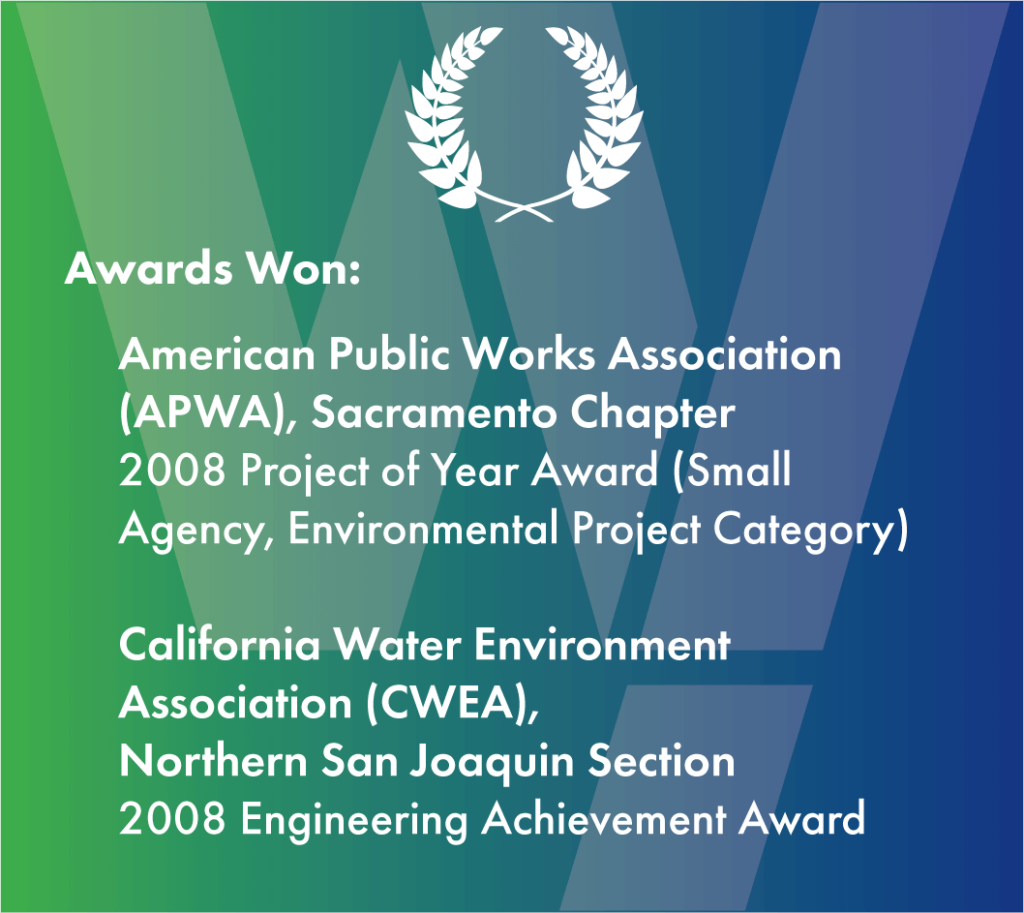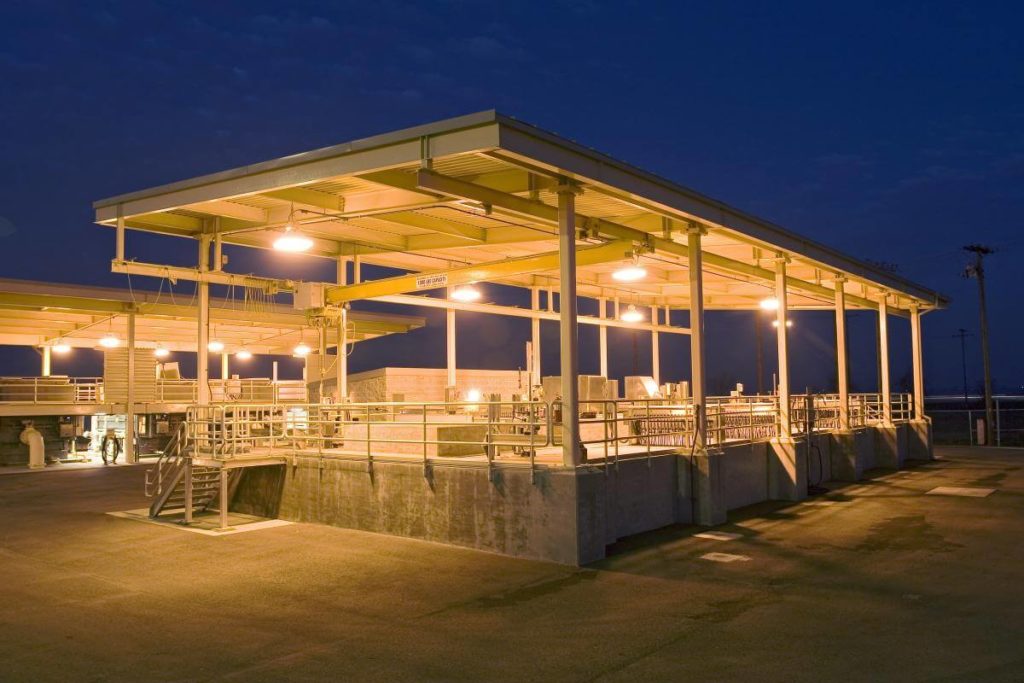
West Yost has been providing wastewater treatment and disposal system planning, regulatory compliance services and engineering design for the City’s White Slough Water Pollution Control Facility (WPCF) since the late 1990’s. West Yost completed design of the City’s $60 million improvement project at the WPCF, including tertiary filtration and ultraviolet (UV) disinfection facilities, expansion of the treatment capacity from approximately 6.5 mgd to 8.5 mgd, and the addition of process improvements to provide full ammonia conversion and partial denitrification.
The purpose of these improvements was to meet increasingly stringent discharge requirements and increase treatment capacity. The City has taken a very proactive stance in addressing permit compliance issues and West Yost has taken a leading role in providing the necessary regulatory assistance and facility planning services.

West Yost provided planning, preliminary design, design, and construction services for secondary treatment process improvements, including full nitrification and denitrification. Improvements included the replacement of the existing chlorine disinfection system with a UV disinfection system in order to achieve compliance with effluent limitations for trihalomethanes (THMs). The UV disinfection system was designed in conjunction with a cloth disk filtration system to provide the necessary pretreatment for UV disinfection, and to meet separate effluent limits for TSS, turbidity, and total coliform. Filtration and UV equipment was purchased prior to the completion of design to expedite project completion and to meet the permit compliance deadline.
Improvements also included increased aeration blower and air diffuser capacity. During the process design phase, West Yost conducted process modeling of the secondary treatment process using the BioWin modeling program. The modeling effort included development of a comprehensive sampling program to allow for model calibration.
The calibrated BioWin model was used to identify and size secondary treatment improvements required to comply with the more stringent regulatory requirements. An aeration equipment evaluation was also conducted during preliminary design. The detailed present worth analysis compared Sanitaire fine bubble membrane disk diffusers with Parkson ultra-fine bubble aeration panels. Although they have a higher initial cost, the Parkson aeration panels are more efficient. The improved efficiency not only would reduce energy use, but the lower air demand meant that the new blowers and air piping would be smaller and less expensive. A system consisting of Parkson aeration panels and four 350-hp multi-stage centrifugal blowers was recommended.

